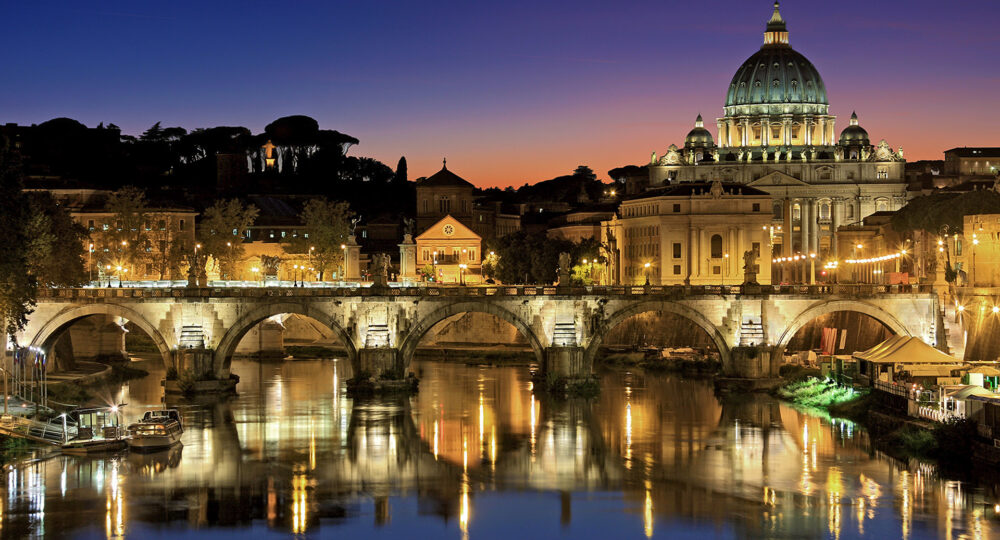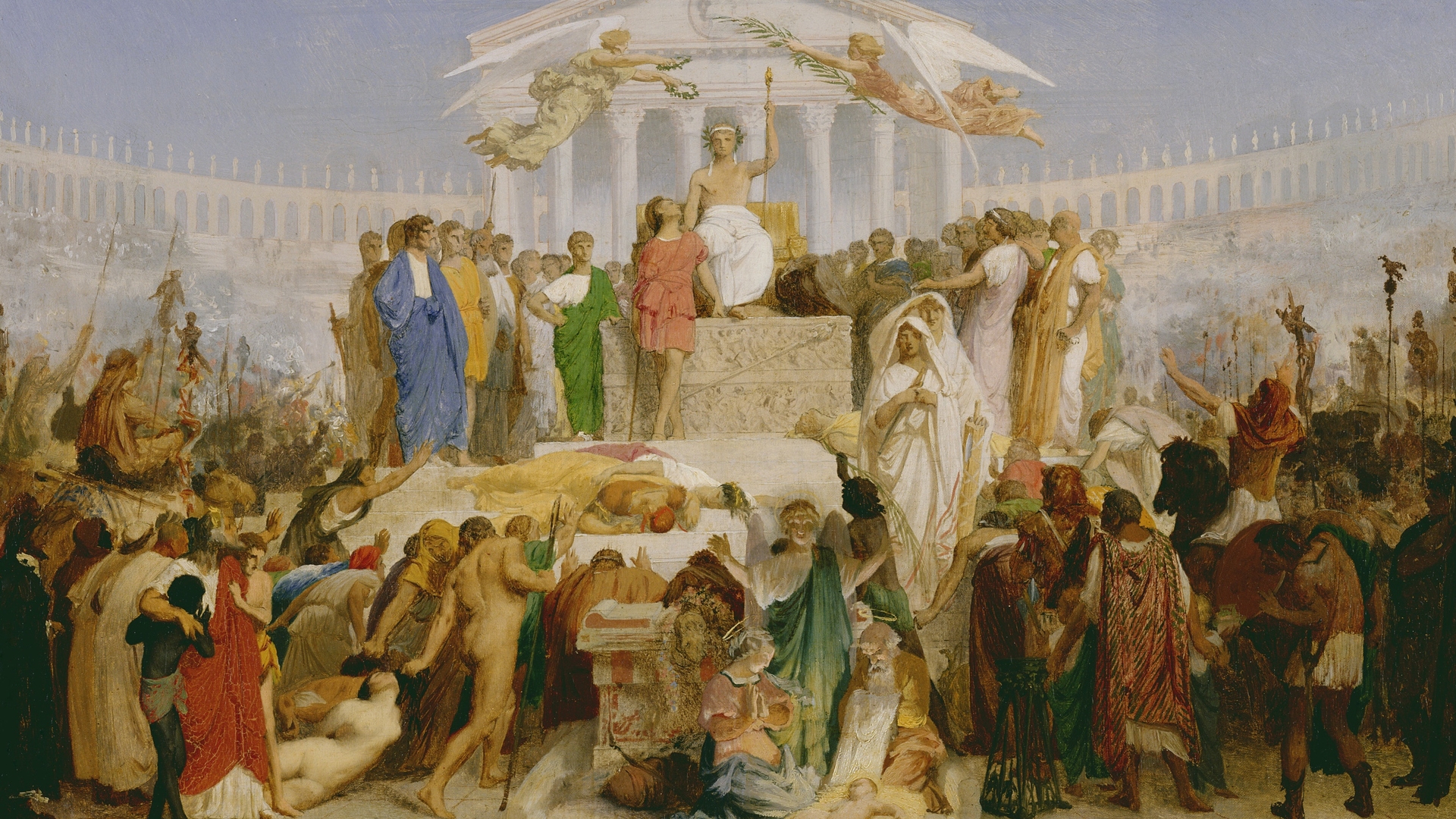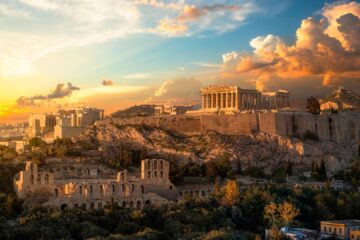
The Eternal City of Rome: Spawned from Myth, Sculpted by Time
Rome is a remarkable destination for exploring the wonders, allure of ancient ruins, and inspiring art. An iconic city is still alive to speak of its rich history and enduring charm. The journey commenced with a remote settlement on the top of a hill, which evolved to be the capital of a great empire and the heart of the Catholic Church.
On the authority of Roman mythology, the origins of the ancient city of Rome are as dramatic as they are divine. The tale begins with the twin brothers, Romulus and Remus, born to a vestal virgin and Mars, the god of war. Abandoned and nursed by a she-wolf, their story culminates in Romulus establishing Rome on Palatine Hill in 753 BCE, following a fraternal dispute that left Remus dead. This mythological foundation set the stage for a city destined for greatness. Initially a cluster of huts, Rome soon began transforming into a formidable republic. By the 6th century BCE, it had already evolved into a complex urban centre, showcasing early Roman engineering marvels like the Cloaca Maxima, one of the world’s earliest sewage systems.
The Roman Republic Era (509-27 BCE) witnessed the city’s expansion in power and culture. Monumental developments like the Forum became the heart of public life, hosting political gatherings, trials, and gladiatorial combats. The Republic era also birthed the legal concept of ‘innocent until proven guilty,’ a foundational principle in modern law. Transitioning from a Republic to an Empire in 27 BCE under Augustus, Rome reached unprecedented heights. The Pax Romana, 200 years of peace and stability, saw the city flourish. Architectural masterpieces like the Colosseum, a symbol of Roman engineering ingenuity, and the Pantheon, a testament to Roman architectural prowess, were constructed.
However, Rome was not just a city of stone and conquest. It was a melting pot of cultures, languages, and religions, reflecting the diversity of its vast Empire. The city’s ancient streets echoed with Latin, Greek, Hebrew, and many other tongues. As the travellers tread the cobblestones of Rome, they walk on layers of history. Each stone silently witnesses the city’s journey from mythic origins to a metropolis that shaped the world. Rome, a city birthed by gods, built by emperors, and trodden by centuries, remains eternal in the annals of history.
The Ascent of Rome: From Republic to Colossal Empire

Age of Augustus by Jean-Leon Gerome, French oil painting, 1852-54. Roman Emperor, Augustus Caesar surrounded by prominent Romans with many peoples of the Empire gathered below. Photo: © The Everett Collection / Getty Images
The story of the Roman Empire is a saga of military might, political savvy, and strategic alliances, marking its ascent from a modest city-state to a colossal empire that dominated the ancient world. In the wake of the establishment of the Roman Republic in 509 BCE, Rome was merely one of many city-states on the Italian peninsula. Its journey to the Empire began with the unification of Italy. Through military conquest and forging strategic alliances, Rome gradually brought neighbouring Latin, Etruscan, and Greek states under its influence by the end of the 4th century BCE.
The Punic Wars (264-146 BCE) against Carthage were pivotal in Rome’s ascent. These three brutal wars, spanning over a century, ended with Rome annihilating its rival Carthage. The victory in the Second Punic War, marked by Scipio’s defeat of Carthaginian General Hannibal at Zama in 202 BCE, was particularly decisive. Post these wars, Rome emerged as the dominant power in the western Mediterranean.
Rome’s expansion continued eastward. Rome secured its hold over the eastern Mediterranean by the mid-2nd century BCE by defeating the Hellenistic kingdoms in the Macedonian and Syrian Wars. This expansion brought immense wealth and resources to Rome but also challenges, sparking a series of civil wars as powerful generals like Julius Caesar vied for power. The rise of Augustus marked the transition from Republic to Empire, Rome’s first emperor, in 27 BCE. Under Augustus, the Roman Empire reached new heights of stability and prosperity, initiating the Pax Romana, a period of relative peace and order that lasted over two centuries.
At its peak under Emperor Trajan in the early 2nd century CE, the Roman Empire spanned from the Atlantic Ocean to the Arabian Sea, encompassing diverse peoples and cultures. The massive Empire was managed through a complex network of roads, a uniform legal system, Romanisation, and the spread of Roman culture and language. However, the factors contributing to its rise also sowed the seeds of its eventual decline. The Empire’s vastness made it unwieldy to govern, while economic troubles and external pressures began to strain its foundations.
In its rise, the Roman Empire rewrote the annals of history, leaving a legacy that continues to echo through time. Its ascent from a small city on the Tiber River to a colossal empire remains one of the most remarkable stories of human civilisation.
The Decline of the Roman Empire

Army Advancing among Roman Ruins by Jacob van der Ulft. Photo: Courtesy of Mauritshuis, Europeana
The fall of the Roman Empire, a watershed moment in world history, was not an event but a gradual process marked by several key incidents. This decline transformed the face of Europe and marked the end of ancient history, ushering in the Middle Ages. The crisis began in the 3rd century CE, characterised by political instability, economic turmoil, and external invasions. The Empire, which had grown too vast, faced difficulties in governance and defence. The reign of Emperor Diocletian (284-305 CE) temporarily stabilised the situation through administrative reforms and the division of the Empire into two territories, Western and Eastern. However, these measures only provided a temporary respite.
Economic challenges, including heavy taxation, inflation, and reliance on slave labour, undermined the Empire’s stability. The transition from a slave-based to a feudal system disrupted agricultural and economic structures. This economic turmoil weakened Rome’s ability to sustain its military forces. Religious transformation also played a role. The rise of Christianity, culminating in Emperor Constantine’s conversion and the Edict of Milan in 313 CE, shifted the cultural and religious landscape of the Empire. While it eventually became the state religion, the initial transition period saw internal conflicts and a weakening of traditional Roman values.
The invasion by barbarian tribes was the most direct cause of Rome’s fall. The Visigoths, under Alaric, sacked Rome in 410 CE, a significant psychological blow to the Empire’s invincibility. This event was followed by the Vandals, who further weakened the Western Empire. The conclusive decline happened in 476 CE, when the last Roman emperor, Romulus Augustulus, was overthrown by a Germanic chieftain, Odoacer. This event is traditionally marked as the end of the Western Roman Empire. The Eastern Roman Empire, known as the Byzantine Empire, continued until 1453 CE.
The fall of the Roman Empire was a complex process influenced by internal weaknesses and external pressures. Its decline reshaped Europe, setting the stage for the emergence of the modern world. The story of Rome’s fall reminds us that even the mightiest empires are not immune to the forces of change and time.
Roman Renaissance: A New Dawn of Brilliance
A new era of profound cultural and artistic revitalisation that swept through Europe from the 14th to the 17th century found fertile ground in Rome, transforming it into a crucible of artistic and architectural innovation. This era, marking the transition from the Middle Ages to modernity, is characterised by a reawakening interest in classical antiquity and a flourishing of the arts and sciences. The Papacy reestablished in Rome in the early 15th century following the Avignon Papacy and the Western Schism, played a pivotal role in the city’s Renaissance revival. Popes like Nicholas V and Julius II were not just spiritual leaders but also patrons of arts who envisioned Rome as a splendid centre of Christendom. Their ambitions led to the commission of grand architectural projects and artworks that would redefine the cityscape.
Architects like Bramante, Michelangelo, and Bernini and artists like Raphael and Caravaggio became synonymous with Rome’s Renaissance. Bramante’s St. Peter’s Basilica design set a precedent in architectural grandeur, while Michelangelo’s work on the Sistine Chapel ceiling remains an unparalleled feat of artistic genius. The Renaissance in Rome also marked a departure from medieval fortress-like structures to grandiose and harmonious buildings, reflecting the principles of classical Roman architecture. This architectural Renaissance was not just limited to churches and basilicas but also extended to public spaces, transforming Rome into a city that mirrored the grandiosity of its ancient past.
Furthermore, the Renaissance period in Rome was marked by a renewed interest in humanism. This intellectual movement placed a greater emphasis on human values, individualism, and secularism, as opposed to the religious focus of the Middle Ages. Scholars and artists in Rome began to explore subjects like philosophy, literature, and the sciences, drawing inspiration from ancient Greek and Roman texts. It was a rebirth of the cultural and intellectual spirit of the city. It bridged the ancient and modern worlds, leaving a legacy that continues to define Rome’s identity as a city where history and creativity converge in a timeless dialogue.
Risorgimento: Unification of Italy
The Risorgimento, a pivotal era in Italian history, marked Rome’s journey towards becoming the capital of a unified Italy. This period, spanning the 19th century, was characterised by a series of political and social movements aimed at consolidating the various independent states of the Italian Peninsula into a single nation-state. With its rich historical and cultural significance, Rome symbolised Italian unity and national identity.
At the heart of this movement was the struggle against foreign domination and local despotism. Key figures like Giuseppe Garibaldi and Count Camillo di Cavour emerged as architects of unification. The culmination of the Risorgimento came in 1870 with the Capture of Rome, ending the temporal power of the Papacy and establishing Rome as the capital of the newly unified Kingdom of Italy. This transition redefined Italy’s political landscape and ignited a cultural and social renaissance, reinforcing Rome’s legacy as a city central to Italy’s identity and history.
Fascism in Rome
The Fascist era in Rome, spearheaded by Benito Mussolini’s regime from 1922 to 1943, was a time of significant transformation and turmoil. Mussolini, seizing power in a march on Rome, established a totalitarian state, fundamentally altering the city’s political and social landscape. Rome, under Fascism, became a stage for Mussolini’s ambitions, with grand architectural projects aimed at glorifying the regime and evoking the city’s imperial past. Iconic developments like the Via dei Fori Imperiali, a road cutting through ancient Roman forums, exemplified this blend of modern authoritarianism with historical grandeur.
This era also saw the implementation of oppressive policies and propaganda, suppressing dissent and promoting Fascist ideology. Rome’s Jewish community, an integral part of the city’s fabric for centuries, faced persecution under the regime’s racial laws. The Lateran Treaty of 1929, a pact between Mussolini and the Vatican, established Vatican City as an independent state, ending decades of conflict between the Church and the Italian state. While marked by architectural growth and urban planning, these years were also a period of darkness, leaving a complex and contentious legacy in Rome’s history.
Post-Fascist Period in Rome
During World War II, in 1943, to safeguard the city’s invaluable historical and cultural heritage from the ravages of war, the Italian government declared Rome an open city, a strategic move to prevent further Allied bombing. In the aftermath of World War II, Rome, like much of Italy, faced a period of reconstruction and renewal. The city, having endured significant damage during the war, embarked on a journey of rebuilding, both physically and culturally. This era saw the rapid development of new neighbourhoods and infrastructures as Rome strove to repair the scars of conflict and modernise. The post-war period also marked a significant shift in Rome’s political landscape, with the fall of Fascism leading to the establishment of the Italian Republic in 1946, bringing democracy and a new constitution.
Culturally, post-war Rome experienced a renaissance, becoming a hub of cinema and art. The Italian neorealism film movement, with directors like Federico Fellini and Roberto Rossellini, used the city as a backdrop to portray the realities of Italian life and the human condition in the aftermath of the war. Rome also saw a resurgence in tourism, as its rich historical and cultural heritage attracted visitors from around the world. This period of recovery and cultural flourishing played a crucial role in redefining Rome’s identity in the 20th century, cementing its status as a global city of historical significance and contemporary dynamism.
Rome has now become a reimagined global destination today, drawing millions of tourists annually to its rich shades of historical, cultural, and culinary experiences. The immortal city encapsulated in landmarks like the Colosseum and Vatican City, continues to fascinate visitors from around the world.









